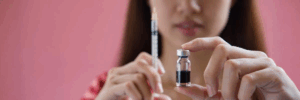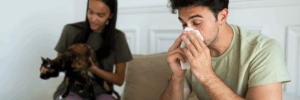For individuals living with diabetes, a simple cut or sore on the foot can quickly become a serious health threat. Diabetic foot ulcers (DFUs) are a common and dangerous complication, often leading to infection and, in severe cases, amputation. Fortunately, the field of podiatry is constantly evolving, and exciting wound care innovations for diabetic foot ulcers are changing outcomes for patients. These recent advances in diabetes foot management go beyond traditional bandages, offering sophisticated technologies that actively promote and accelerate the body’s natural healing processes. This guide explores the cutting-edge treatments that are making a profound difference in healing these challenging wounds. Get a consultation with the best Podiatrists in Brooklyn.
The Challenge of Healing Diabetic Foot Ulcers
Healing a DFU is complex. Diabetes can impair circulation, reducing the flow of oxygen-rich blood needed for tissue repair. It also causes nerve damage (neuropathy), which diminishes sensation, meaning a person might not even feel an injury. This combination of poor blood flow and lack of sensation creates a perfect storm where wounds can fester, become infected, and resist healing. Standard care, which includes cleaning the wound, removing dead tissue (debridement), and offloading pressure, is the foundation, but advanced therapies are often needed to close a persistent ulcer.
Recent Advances in Diabetes Foot Management and Wound Care
Modern wound care has moved far beyond simple dressings. Today, a qualified Brooklyn podiatrist has access to a range of innovative tools designed to stimulate healing at a cellular level.
Bioactive Dressings and Skin Substitutes
These are not just passive coverings. Bioactive dressings and skin substitutes are advanced materials that actively participate in the healing process.
- Collagen Dressings: Collagen is a key protein in skin structure. These dressings provide a scaffold for new cells to grow upon, essentially giving the body a framework to build new tissue.
- Cellular and Tissue-Based Products (CTPs): Often referred to as “skin substitutes,” these are a significant breakthrough. Derived from sources like amniotic membrane or bio-engineered skin cells, CTPs deliver essential growth factors, proteins, and cells directly to the wound bed. They help reduce inflammation, fight infection, and powerfully stimulate the generation of new, healthy skin.
Negative Pressure Wound Therapy (NPWT)
Also known as a wound vac, NPWT is a sophisticated system that uses a sealed dressing connected to a gentle vacuum pump.
- How it Works: The vacuum pressure helps to draw the edges of the wound together, remove excess fluid and infectious material, and stimulate blood flow to the area. This creates an ideal, moist healing environment while protecting the wound from outside contamination.
- Benefits: NPWT has been shown to significantly speed up the healing of large or deep DFUs, preparing the wound bed for closure or a skin graft.
Hyperbaric Oxygen Therapy (HBOT)
Oxygen is vital for healing, and poor circulation in diabetic patients often starves a wound of this essential element. HBOT addresses this problem directly.
- How it Works: During a session, the patient rests in a pressurized chamber while breathing 100% pure oxygen. This high-pressure environment allows the blood to absorb and carry significantly more oxygen than under normal conditions. This super-oxygenated blood is then delivered to the wound site, where it fuels cell repair, helps fight off certain types of bacteria, and stimulates the growth of new blood vessels. Finding the best podiatrist in Brooklyn may involve looking for a clinic affiliated with facilities that offer this advanced therapy.
Offloading Technology
A wound on the bottom of the foot will never heal if it’s constantly under pressure from walking. Offloading—or removing pressure from the ulcer—is a critical component of care.
- Total Contact Casting (TCC): Considered the gold standard, a TCC is a specially designed cast that fits the leg and foot precisely. It redistributes weight and pressure across the entire bottom of the foot and leg, away from the ulcer, allowing it to heal undisturbed.
- Removable Cast Walkers (Boots): While not as effective as a TCC, these boots are another option to reduce pressure on the wound.
Partnering with the Right Specialist is Key
Navigating these wound care innovations for diabetic foot ulcers requires expertise. The successful treatment of a DFU is not about a single product but about a comprehensive strategy tailored to the individual patient. This is where an expert podiatrist specializing in wound care becomes an indispensable part of your healthcare team.
A skilled Brooklyn podiatrist will start with a thorough assessment to determine the wound’s cause, check for infection, and evaluate blood flow. From there, they will develop a multifaceted treatment plan that may include debridement, advanced dressings, offloading, and coordination with other specialists for treatments like HBOT. If you are seeking the best podiatrist in Brooklyn for diabetic foot care, find a practice that is experienced with these modern technologies.
A Hopeful Future for Diabetic Foot Health
The recent advances in diabetes foot management offer more hope than ever for individuals facing the challenge of a non-healing foot ulcer. These technologies help to prevent amputations, reduce healing times, and improve patients’ quality of life. If you or a loved one has diabetes, proactive foot care is your best defense. Perform daily foot checks, manage your blood sugar, and at the first sign of a sore or unusual change, contact a podiatrist immediately. Early and advanced intervention is the key to a successful outcome. At Doral Health & Wellness, we have Podiatrists with extensive education and expertise. Our address is 1797 Pitkin Avenue, New York, NY 11212. To make an appointment, please call + 1 718 367 2555, or register your information and make direct contact with us at https://yuz88hfiyh7.typeform.com/Doralintake or send an email to info@doralhw.org. You can also visit us at 1797 Pitkin Avenue, Brooklyn, NY 11212.






